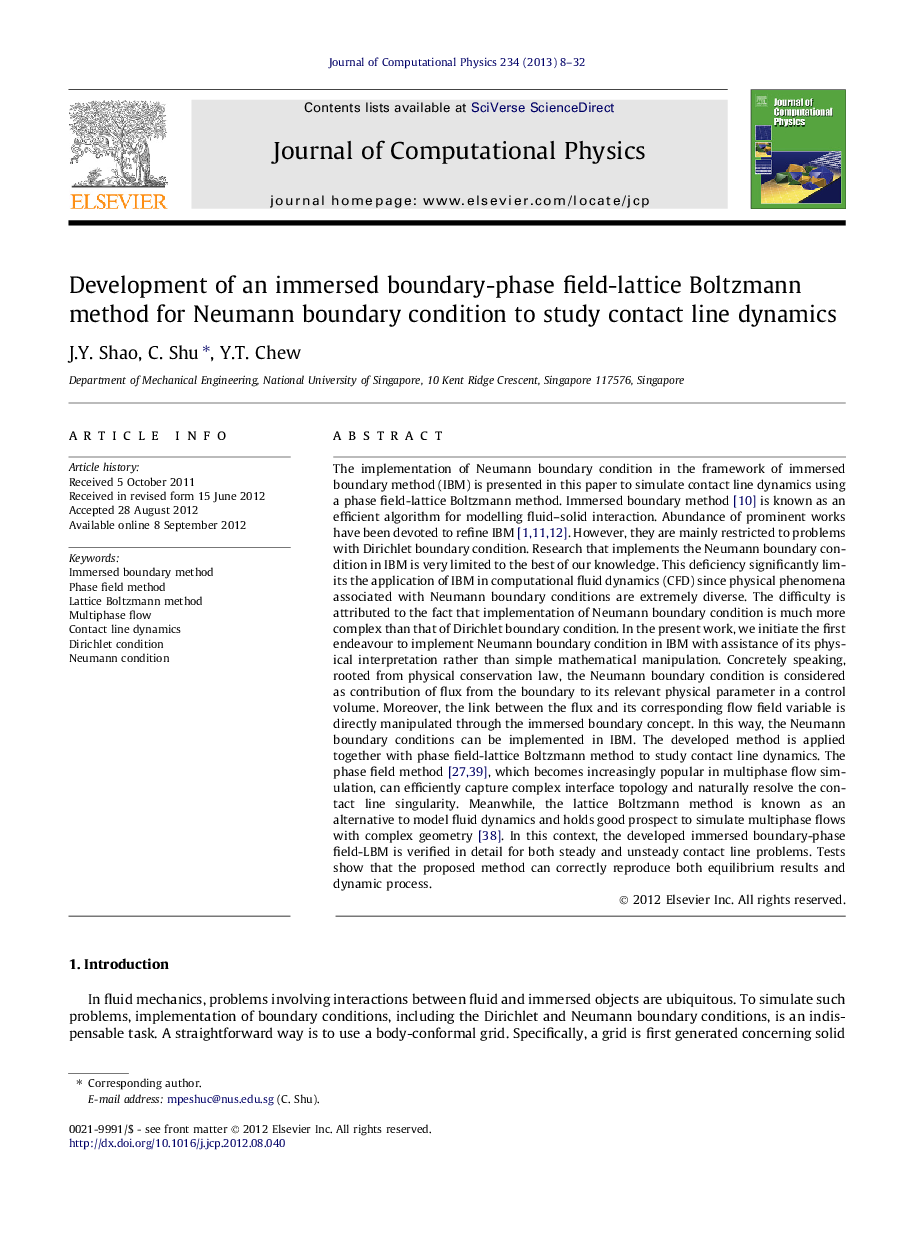| Article ID | Journal | Published Year | Pages | File Type |
|---|---|---|---|---|
| 520561 | Journal of Computational Physics | 2013 | 25 Pages |
The implementation of Neumann boundary condition in the framework of immersed boundary method (IBM) is presented in this paper to simulate contact line dynamics using a phase field-lattice Boltzmann method. Immersed boundary method [10] is known as an efficient algorithm for modelling fluid–solid interaction. Abundance of prominent works have been devoted to refine IBM [1], [11] and [12]. However, they are mainly restricted to problems with Dirichlet boundary condition. Research that implements the Neumann boundary condition in IBM is very limited to the best of our knowledge. This deficiency significantly limits the application of IBM in computational fluid dynamics (CFD) since physical phenomena associated with Neumann boundary conditions are extremely diverse. The difficulty is attributed to the fact that implementation of Neumann boundary condition is much more complex than that of Dirichlet boundary condition. In the present work, we initiate the first endeavour to implement Neumann boundary condition in IBM with assistance of its physical interpretation rather than simple mathematical manipulation. Concretely speaking, rooted from physical conservation law, the Neumann boundary condition is considered as contribution of flux from the boundary to its relevant physical parameter in a control volume. Moreover, the link between the flux and its corresponding flow field variable is directly manipulated through the immersed boundary concept. In this way, the Neumann boundary conditions can be implemented in IBM. The developed method is applied together with phase field-lattice Boltzmann method to study contact line dynamics. The phase field method [27] and [39], which becomes increasingly popular in multiphase flow simulation, can efficiently capture complex interface topology and naturally resolve the contact line singularity. Meanwhile, the lattice Boltzmann method is known as an alternative to model fluid dynamics and holds good prospect to simulate multiphase flows with complex geometry [38]. In this context, the developed immersed boundary-phase field-LBM is verified in detail for both steady and unsteady contact line problems. Tests show that the proposed method can correctly reproduce both equilibrium results and dynamic process.
